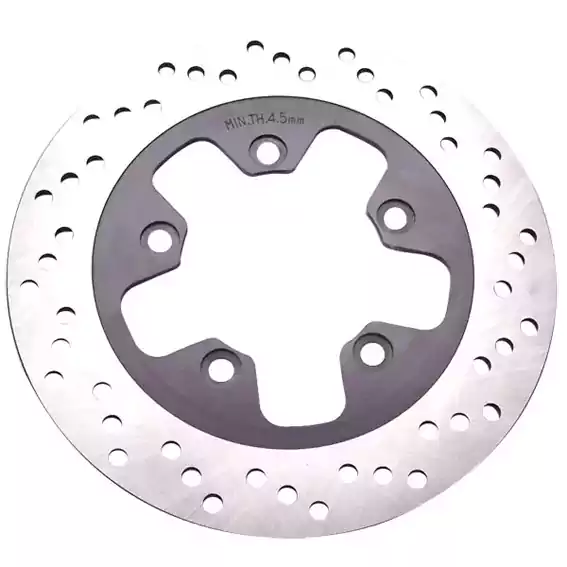Why are there holes in the disc brakes: Disc Brake: The disc brake on a bike often features numerous small holes, which may appear to be purely for design purposes to many observers. However, these holes serve a vital function rather than being merely aesthetic.
Why are there holes in the disc brakes
Bike’s Disc Brake: The presence of numerous small holes in a bike’s disc brake serves a crucial purpose beyond aesthetics. These holes play a pivotal role in enhancing braking performance and ensuring safety. Let’s delve into their significance:
why bike disc brakes have holes
- Enhanced Ventilation: During braking, friction between the brake pad and the disc generates heat. The presence of holes in the disc facilitates improved airflow, allowing heat to dissipate rapidly. This helps in maintaining optimal operating temperatures for the braking system, thereby reducing the risk of brake failure. In essence, the holes in the disc brake serve as ventilation channels.
- Reduced Contamination: Water and debris can accumulate on the brake discs and pads, especially in wet conditions. The holes in the disc aid in draining out water and clearing debris, thereby enhancing the effectiveness of the braking system. Additionally, during braking, minute particles from the brake pads may transfer onto the disc surface. The presence of holes assists in expelling these particles, ensuring better contact between the pad and the disc and consequently improving braking performance.
- Weight Reduction: The inclusion of holes in the disc helps in reducing its overall weight, consequently contributing to a lighter bike. This reduction in weight not only enhances speed and mileage but also improves overall bike performance.
- Cost-effectiveness: The incorporation of small holes in the disc results in the utilization of less material during manufacturing. Consequently, this reduces the production cost associated with the disc brake. A lower production cost translates to a more competitive pricing strategy for the bike.
In conclusion, the presence of holes in a bike’s disc brakes offers numerous benefits, including enhanced ventilation, reduced contamination, weight reduction, and cost-effectiveness. Opting for a model equipped with disc brakes can significantly improve the braking system of your bike.
